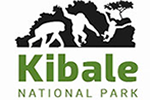All about Kibale Forest National Park, the best place to see chimpanzees in Africa
Kibale National Park (795 km2) is located in western Uganda (0 13′ – 0 41′ N and 30 19′ – 30 32′ E) near the foothills of the Ruwenzori Mountains.
Location: Western Uganda, about one hour east of Fort Portal (309 km from Kampala, 399 km from Kigali)
Size: 331 kilometers squared
Famous for: the world’s largest density of primates, chimpanzee habituation experience, experimental tourism
The Kibale National Park is distinguished by its high level of biodiversity, notably the thirteen habituated primate species. A great number of chimpanzees live in Kibaale, finding safe retreat in these Ugandan forests, as well as black, white and even red colobus monkeys. Forest elephants also reside here.
Since Kibale was transformed into a national park, the area has become more tourist-friendly and prepared to offer a variety of activities. Today, primate walks, community walks, chimp habituation experiences and guided night trekking are offered near Bigodi wetlands and Magombe swamps. For bird aficionados, this swampy region is great for spotting numerous bird species.
Kibale Forest National park is located in western Uganda, Fort Portal. The park is famed for its habituated chimpanzees and birding in Bigodi swamp. The Kibale forest covers the northern and the central section of Kibale National park. The northern section of the Kibale National park is elevated with a peak of approximately 1590 meters above sea level. This northern section in addition is the wettest area receiving an annual rainfall of close to 1700mm.The months that receive most rain are from March to May and then September to November. Temperatures here range from 14 to 27°c, whereas the south receives higher temperatures since its terrain drops onto the floor of the Great Rift Valley.
This lowland is characterized by a Montane Forest, tropical rain-forest and a damp deciduous forest that serve as habitat to a wide variety of wildlife among which are the chimpanzees.
The gentle landscape of Kibale Forest characterized with rolling hills plus trails traverse through the verdant forest at regular distance make walking in the forest somewhat easy. Every morning plus afternoon 4 groups each with 8 people are permitted to track these chimpanzees. Chimpanzees are generally more active compared to mountain gorillas and live in larger families with 30 and more members. Similar to gorilla trekking, chances of seeing the chimpanzee is estimated to 90%. The Permits go at a price of $90 per individual per day, and it is advised that persons interested book earlier.
Geography
Kibale Forest National Park, together with the nearby Ndali-Kasende Crater Lakes, are close to being an independent traveller’s dream, blessed with the tantalizing combination of inexpensive accommodation, easy access, wonderful scenery and a remarkable variety of activities. The park is highly alluring to nature lovers for the opportunity to view a wide range of forest birds and track chimpanzees (as well as viewing a wide range of other primates). Though the scenic appeal of the region remains undiminished, the rising cost of chimp tracking, and the conversion of the old budget Kanyanchu River Camp to an upmarket tented camp, mean that the national park is no longer the mandatory backpacker destination it was a few years ago.
History
Gazetted in October 1993, the 766km squared Kibale Forest National Park extends southwards from Fort portal to form a contiguous block with the Queen Elizabeth National Park. Interspersed with patches of grassland and swamp, the dominant vegetation type is rain forest, spanning altitudes of 1,100-1,590m and with a floral composition transitional to typical eastern Afro-montane and western lowland forest.
Wildlife in Kibale National Park
The park has 60 mammal species of which 13 species are primates.
Primates
This park has the highest concentration of primates in Uganda. The 9 diurnal primates include: vervet, red tailed, L’hoests and blue monkeys, olive baboon and chimpanzee.
Other Mammals
Other Mammals in the park include: lion, leopard, buffalo, hippo, warthog, elephant, giant forest hog, bush pig, bush buck, sitatunga and Peter’s red and blue duikers. Bird species number up to 335 species of which 4 are endemics to Kibale: Cassin’s spine tail, blue headed bee eater, masked apalis and Nahan’s francolin. A four hour bird trail has been laid out for serious birders in the Bigodi wetland.
Kibale Forest National Park is habitat to the largest population of forest elephants in the whole of Uganda. These bashful, smaller yet more hairy compared to their savannah equals, live deep within the verdant forest together with buffaloes plus the huge forest hogs and for that reason, these are hardly seen although they leave evident traces behind to expose their presence within the forest. The most commonly sighted at mammals are the bushbucks, large forest squirrels and the duikers.
Birds
Other Wildlife living in Kibale Forest include over 325 species of birds among which are the African-grey parrot, African pitta, noisy hornbills, black-bee eater, yellow-spotted nectar, crowned eagle, yellow-romped tinker bird and the little greenbul.
Getting There
Kibale National park stretches over an expanse of approximately 795 kilometers and its known to hold one of most stunning tropical forests in the whole of Uganda. the Forest is most prominent due to its resident chimpanzees which live here together with a variety of other forest wildlife including several primates.
Research
The park acts as a window through which researchers students can easily study the conflict between wildlife and human demands.
